
|
Astronomy Picture Of the Day (APOD)
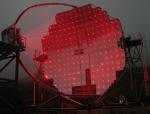 Night MAGIC
Night MAGIC
15.10.2004
Is it magic? On a rare foggy night, mysterious laser beams seem to play across the MAGIC telescope at Roque de los Muchachos on the Canary Island of La Palma. The lasers are actually part of a system designed to automatically adjust the focusing of the inovative, seventeen meter wide, multi-mirrored instrument.
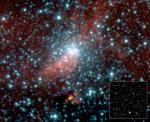 Glimpse of a Globular Star Cluster
Glimpse of a Globular Star Cluster
14.10.2004
Not a glimpse of this cluster of stars can be seen in the inset visible light image (lower right). Still, the infrared view from the Spitzer Space Telescope reveals a massive globular star cluster of about 300,000 suns in an apparently empty region of sky in the constellation Aquila.
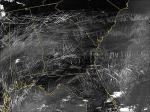 Contrail Clutter over Georgia
Contrail Clutter over Georgia
13.10.2004
Artificial clouds made by humans may become so common they change the Earth's climate. The long thin cloud streaks that dominate the above satellite photograph of Georgia are contrails, cirrus clouds created by airplanes. The exhaust of an airplane engine can create a contrail by saturating the surrounding air with extra moisture.
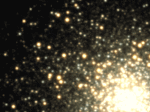 M3: Inconstant Star Cluster
M3: Inconstant Star Cluster
12.10.2004
Star clusters appear constant because photographs of them are frozen in time. In reality, though, cluster stars swarm the center and frequently fluctuate in brightness. Although the time it takes for stars to cross...
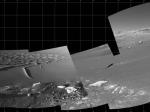 Mosaic of Endurance Crater on Mars
Mosaic of Endurance Crater on Mars
11.10.2004
Where should this Martian rover explore next? Possible choices for the Opportunity rover team on Earth in early August were to send the Martian robot inside Endurance crater toward the arc-shaped sand dunes...
 Sunspot Loops in Ultraviolet
Sunspot Loops in Ultraviolet
10.10.2004
It was a quiet day on the Sun. The above image shows, however, that even during off days the Sun's surface is a busy place. Shown in ultraviolet light, the relatively cool dark regions have temperatures of thousands of degrees Celsius.
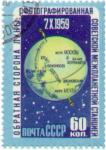 The Averted Side Of The Moon
The Averted Side Of The Moon
9.10.2004
This vintage 60-kopek stamp celebrates a dramatic achievement. On the 7th of October, 1959 (7/X/1959), the Soviet interplanetary station which has come to be called "Luna 3" successfully photographed the far side of the moon giving denizens of planet Earth their first ever view of this hidden hemisphere.
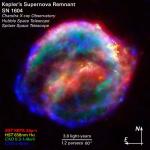 Kepler s SNR from Chandra, Hubble, Spitzer
Kepler s SNR from Chandra, Hubble, Spitzer
8.10.2004
Light from the stellar explosion that created this energized cosmic cloud was first seen on planet Earth in October 1604, a mere four hundred years ago. The supernova produced a bright new star in early 17th century skies within the constellation Ophiucus.
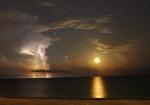 Moon Lightning
Moon Lightning
7.10.2004
Moonsets are not often quite as exciting as this one. But amateur astronomer Marc-Andre Besel was impressed by the brilliant lighting displays that joined the first quarter Moon and stars of the constellation Scorpius in western skies.
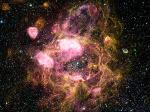 N11: A Giant Ring of Emission Nebulas
N11: A Giant Ring of Emission Nebulas
6.10.2004
How did this unusually large nebula form? One of the largest nebulas yet detected is actually a complex ring of emission nebulas connected by glowing filaments. The unusual network, known as N11, spans over...
|
January February March April May June July August September October November December |
|||||||||||||||||||||||||||||||||||||||||||||||||